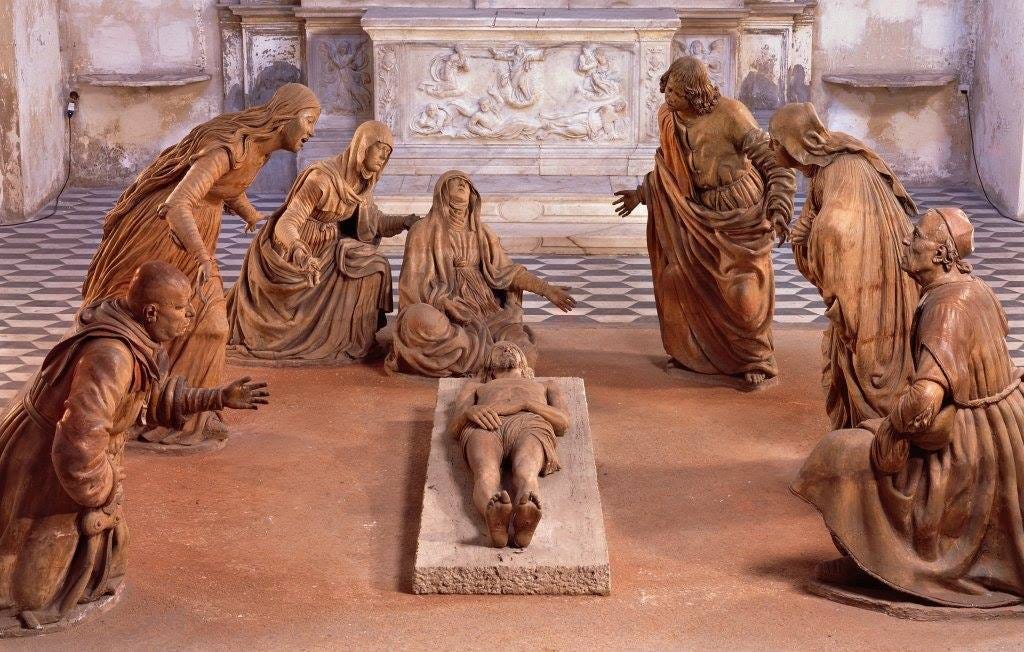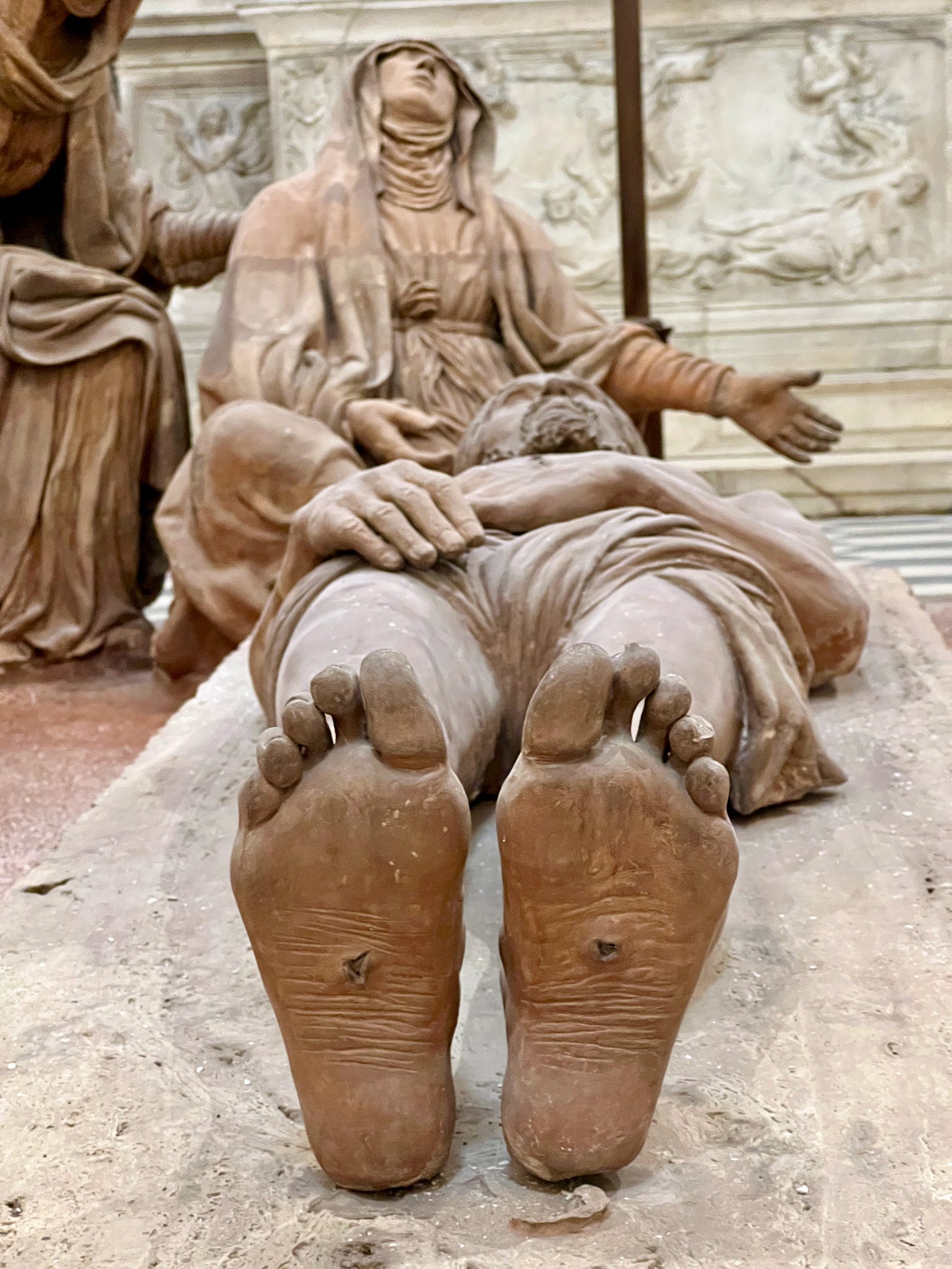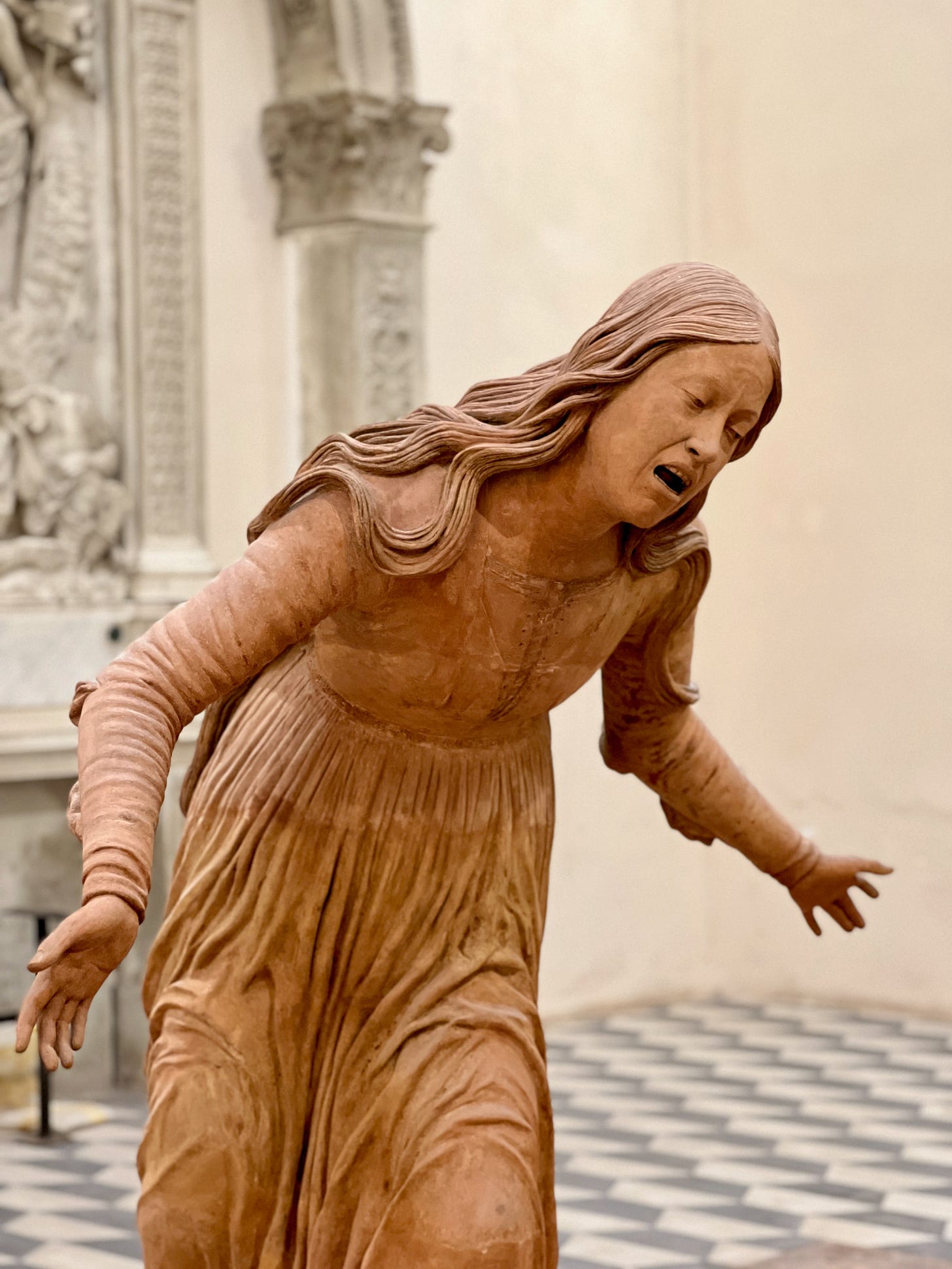How To Feel
A work of art from Renaissance Naples that left me reeling
In 1492, Guido Mazzoni sculpted life-sized figures in terracotta, gathered around the dead body of Christ in a moment of unspeakable horror. Why? Because life is very hard and good art helps people access their most vulnerable moments. Displayed barren in a church still recovering from an American bomb that fell through its roof during World War II, The Lamentation has few visitors but deserves many more. It left me reeling.
The church of Sant’Anna dei Lombardi in Naples tells the story of the Renaissance in Naples. It was the church of the Aragonese Kings of Naples who wrested the city from the French in 1442 by sneaking through a drain pipe in the middle of the night. Giorgio Vasari, the Tuscan artist and architect, painted frescoes for the sacristy, and there’s a Piccolomini chapel, a name familiar to Italian Renaissance super fans. When I was there, conservators, all women as they tend to be, were hard at work on some stucco while a group of local high school kids listened to their teacher explain how this was once among the most important churches in Naples. Below my feet was the Ipogeo — a crypt that was once a draining room for the bodily fluids of the dead with the boneyard below. The walls are painted to look like an idyllic forest with classical ruins — heaven for the learned monks.
Mazzoni’s figures together are like a guidebook to grief, each deep inside their own experience of letting out some of what they feel. Christ’s body is torturously human. The Virgin collapses backward, and Mary Magdalene’s open mouth cries out. During the Renaissance, a smooth forehead was one of the critical markers of beauty, so the lines of torment on hers emphasize the rawness of the moment.
Other figures are more restrained and also veiled portraits of Alfonso II, King of Naples, and his father, Ferrante. Their likenesses worked into the figures of Joseph of Arimathea, and Nicodemus allowed the royals to perform their faith and piety and their control.
The bright light overhead was like hospital lighting and nothing like the ethereal experience of seeing the figures lit by candles as they would have been until relatively recent history. Yet catching these figures unprepared for my company lent them another shade of vulnerability. It is always so worth it to deviate from the beaten path in Italy.
If you like Tante Belle Cose, join me online for Context Conversations. This summer, I’ll be doing a class about Southern Italian art and history every Thursday evening at 7pm EST. See the full menu here of Conversations here: https://www.contextlearning.com/collections/danielle-oteri








I loved your descriptions, like a "guidebook to grief". So striking!